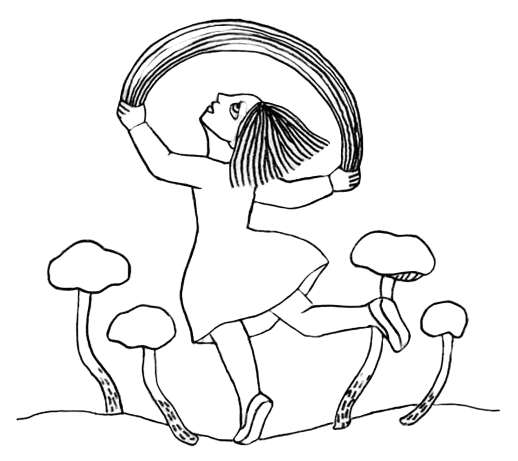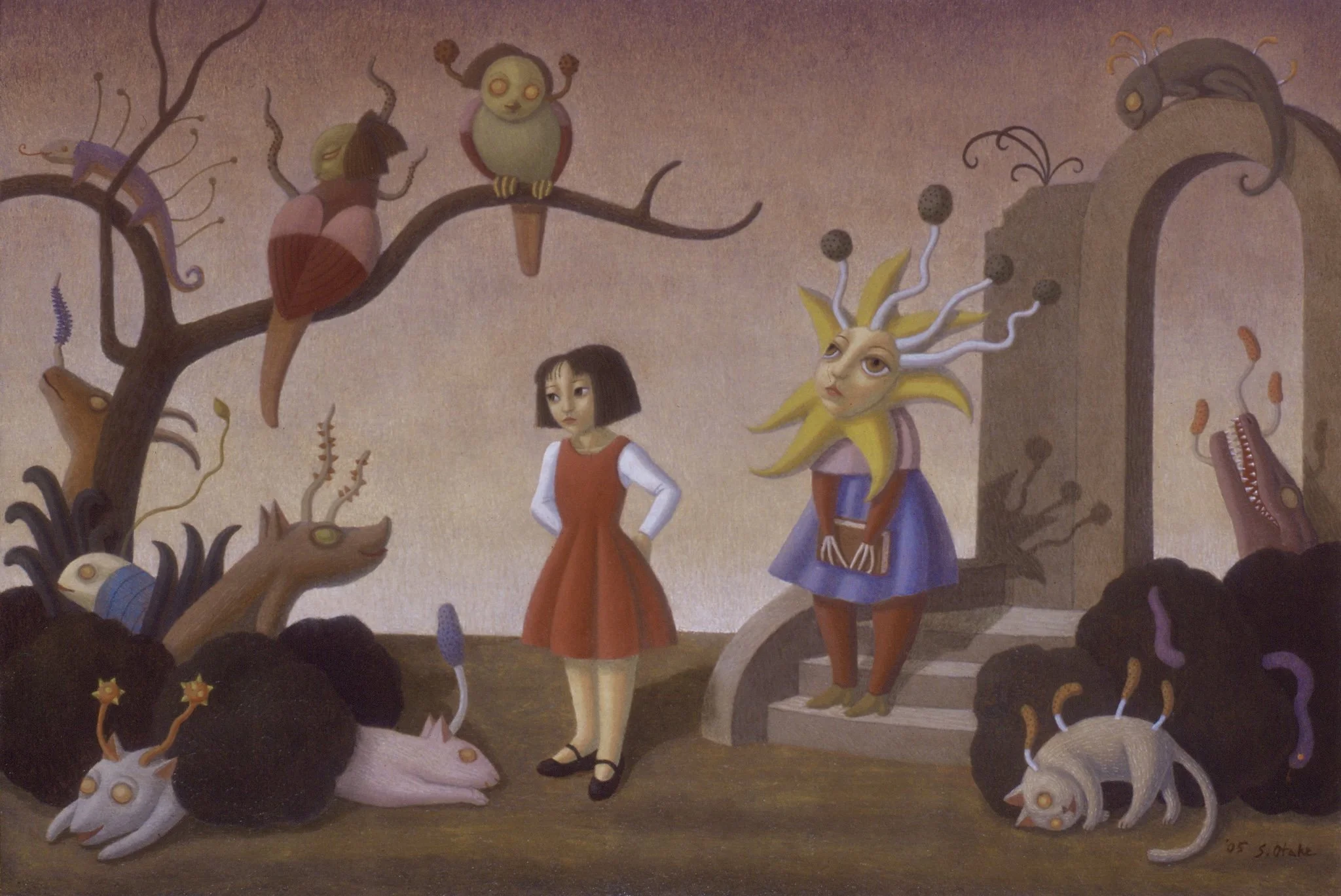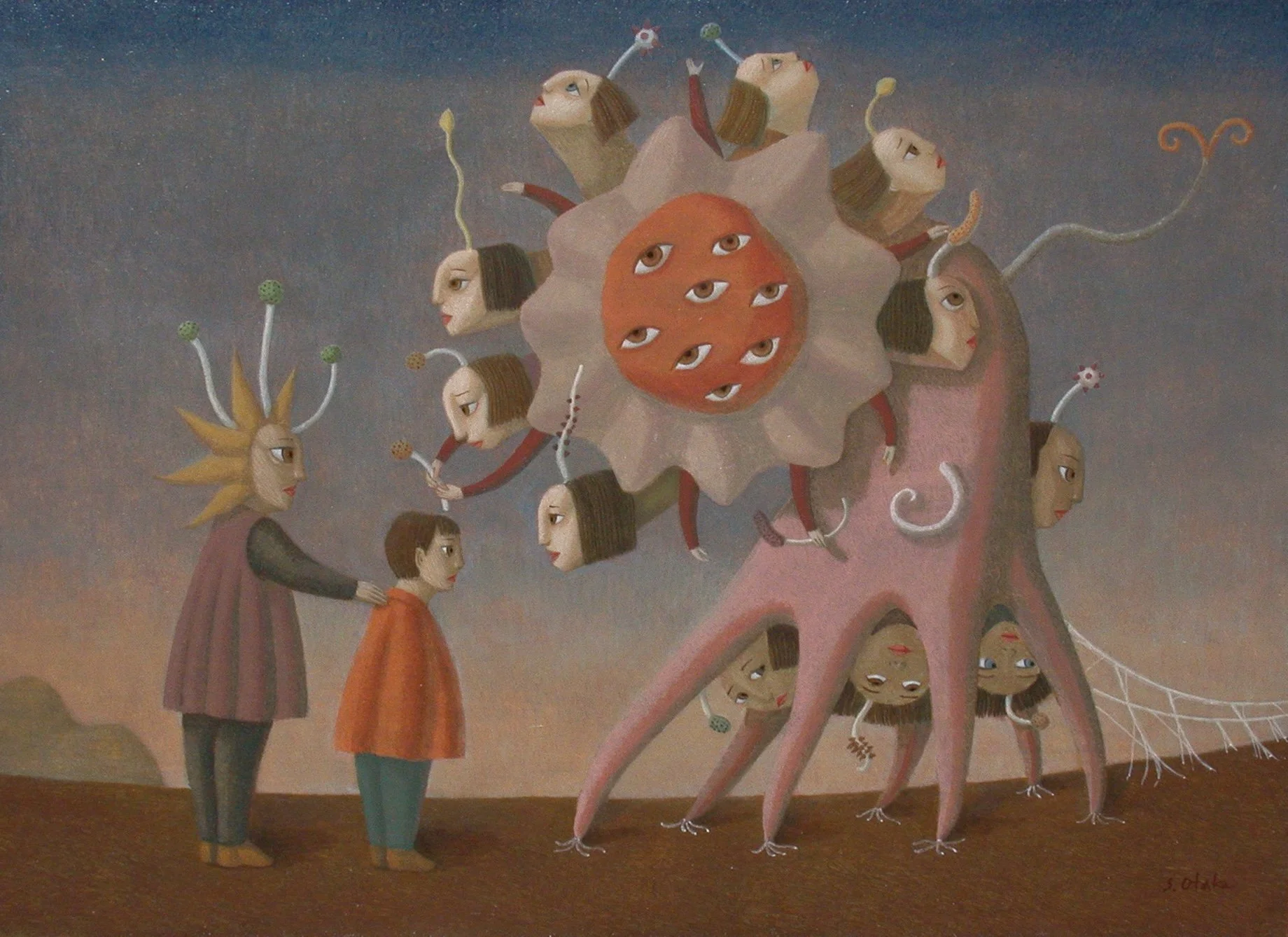The Mycocene
Shigeo Otake
2008
The Mycocene, 2005. Tempera and oil on board. 116.6×91cm
“All that I saw, I will relate.”
“Not man, I once was man.”
Dante, Inferno, Canto I
One night, a figure of strange appearance visited me and introduced himself as Virgilius. He claimed he had come from the future and said he would show me the world that awaited.
Virgilius, 2005. Tempera and oil on board. 15.8×22.7cm
At first, the illness spread among the animals. Creatures overtaken by the fungus collapsed one after another, and mushrooms of every imaginable form sprouted from their bodies.
The Mycocene: The Beginning of the Beginning, 2005. Tempera and oil on board. 40.9×27.3cm
Eventually, human infections appeared. Though desperate treatments were attempted, nothing could stop the relentless emergence of fungi from within people’s bodies.
Treatment, 2004. Tempera and oil on board. 22.7×15.8cm
Humans became motionless, reduced to silent objects. Human civilization reached its end.
The Mycocene: The End of the Beginning, 2004. Tempera and oil on board. 40.9×24.2cm
The longing to remain connected even after death was fulfilled through networks of interlacing hyphae. As these connections multiplied, the fungus awakened into a collective consciousness.
Lovers, 2005. Tempera and oil on board. 22×27.3cm
Formed from the remnants of human minds woven together, this consciousness began seeking ever greater knowledge. It animated corpses, sending them out to lure those still uninfected.
The Seducer, 2005. Tempera and oil on board. 72.7×60.6cm
This collective entity, known as Mother, separated portions of herself to create autonomous agents. They were sent across vast regions to gather new fragments of knowledge.
Dispatch, 2005. Tempera and oil on board. 33.4×19cm
Those implanted with the fungus eventually returned to Mother after long journeys. There, they fused with her, adding their accumulated knowledge to her ever expanding being.
Return, 2005. Tempera and oil on board. 40.9×31.8cm
After countless trials, the fungus chose the path of symbiosis with humankind.
Thus began the age of the Fungal Humanity.
Through the stroma that grew from their heads, people shared their thoughts with one another. Children, however, were still born as ordinary humans.
The Fungal Family, 2005. Tempera and oil on board. 22×27.3cm
When they reached a certain age, children were welcomed into fungal society. The regional collective known as the Sisters bestowed upon each child a new stroma.
The Rite of Growth, 2005. Tempera and oil on board. 33.4×24.2cm
Children played while tangled in strands of fungus.
Entangled in Play, 2005. Tempera and oil on board. 33.4×21.2cm
Other creatures also found their own path to coexistence with the fungus. Some developed a taste for the stromata produced by humans.
Natural Enemies, 2005. Tempera and oil on board. 27.3×16cm
In time, people learned to communicate with other animals through their stromata.
Speaking with the Elephant, 2006. Tempera and oil on board. 22.7×15.8cm
They developed techniques to merge multiple organisms using the fungus as a medium. Through these techniques, humankind expanded into the sky, into the sea, and eventually into space.
Creating a Chimera, 2007. Tempera and oil on board. 53×40.9cm
On calm holiday afternoons, people visited the Human Memories Park and reflected on the ancient species once known as the Old Humanity.
The Human Memories Park, 2008. Tempera and oil on board. 116.6×91cm
After finishing his long tale, the man calling himself Virgilius slowly drew out an object of curious shape and said,
“Humanity is about to meet its end. If you keep this stroma, you can survive and be reborn as a member of the new fungal humanity. And right now, for only…”
Before he could finish, I shut the door firmly in his face and said,
“No, thank you.”
















